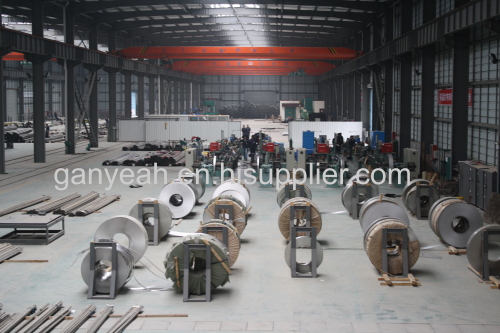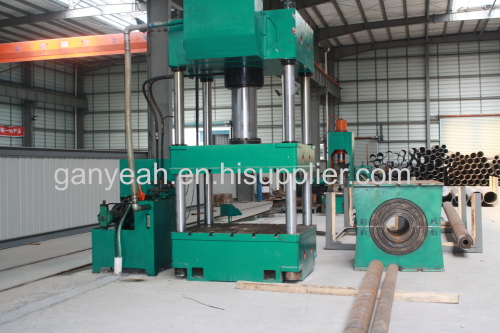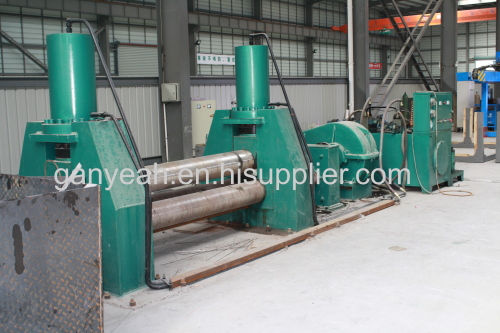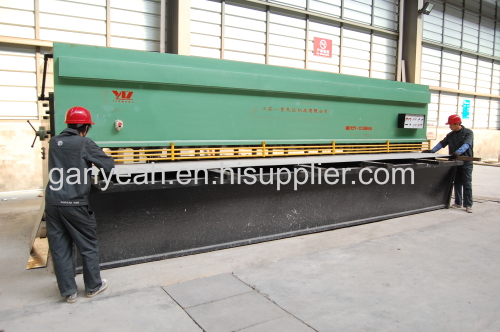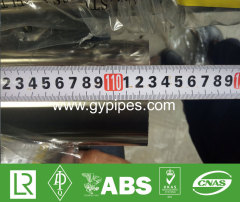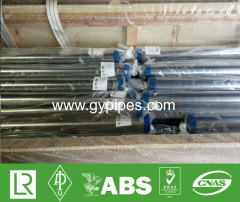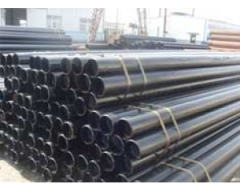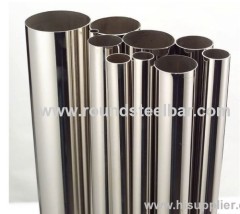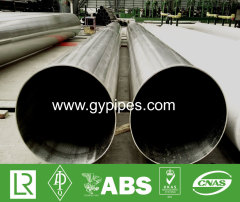
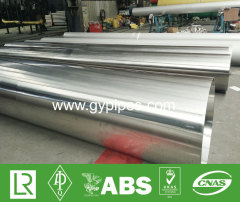

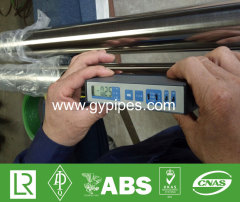
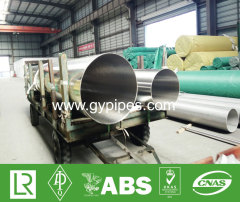
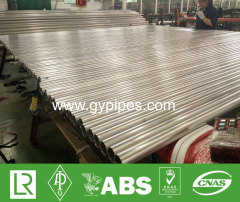
SS304 and 316 Thin Wall Tube
| Min. Order: | 500 Kilogram |
|---|---|
| Trade Term: | FOB,CFR,CIF,EXW |
| Payment Terms: | L/C, D/P, T/T |
| Supply Ability: | 2000Ton/Month |
| Place of Origin: | Zhejiang |
Company Profile
| Location: | Lishui, Zhejiang, China (Mainland) |
|---|---|
| Business Type: | Manufacturer, Trading Company |
Product Detail
| Model No.: | 730640 |
|---|---|
| Means of Transport: | Ocean, Land |
| Brand: | Ganyeah |
| Grade: | SUS 304/304L/ 316L/347H/S32205/S32750 |
| Standard: | Astm a312/Astm a778/Astm a554/Astm a249/JIS G3463 |
| Inspection: | UT, ET, HT, RT |
| Section Shape: | Round |
| Certification: | API 5LC,DNV•GL, ABS, TUV, LR. |
| Length: | 6 m or as customers' request |
| Surface: | Pickling,annealing,polishing,bright |
| HS Code: | 730640000/730611000 |
| Origin: | China |
| Production Capacity: | 2000Ton/Month |
| Packing: | Plastic, Wooden Case, Others Seaworthy Packing |
| Delivery Date: | 15days |
Product Description
Ganyeah Group manufactures the most complete supply of materials/grades of Welded SS304 and 316 Thin Wall Tube.
Melting
Stainless steel is one of the world's most recycled materials, with some 90% of each new batch - or heat - coming from scrap. we use electric arc melting, sophisticated AOD/CLU refining and a specialized ladle treatment that adds additional alloy elements to the steel at precise amounts and temperatures. The high-quality refining and ladling is essential for the downstream production of our corrosion-resistant and heat-resistant special grades.
Continuous production
There are two manufacturing methods for producing SS304 and 316 Thin Wall Tube. They can be produced from large coils of strip or skelp, which is welded without interruption. This is called continuous production. Or they can be produced in large sizes, one piece at a time, which is called batch production.
The starting material for making continuous pipe is a coil of strip or a skelp with the right thickness and width to make the required pipe size. The strip is formed through a series of rolls to make a completely uniform, circular section.
Our size range includes continuous produced pipe from 1/2 through 14-inch nominal pipe size in Schedules 5, 10, 40, and 80.
Batch production
For batch production, the starting material is plate. Almost all of the stainless steel plate used is produced by the TISCO,BAO STEEL plate mill in China, which assures the quality of our starting material.
Our batch-produced pipe covers the size range from 16 inch to 80-inch diameter. In addition to the lighter wall ranges, the batch-produced pipe includes wall thicknesses up to two inches for the largest pipes.
Welding
For batch production, the plate arrives at the SS304 and 316 Thin Wall Tube mill cut to the correct length and width for the pipe size to be manufactured. First, the edges of the plate are formed to provide for the correct geometry in the weld. Then the whole pipe is roll-formed to provide the cylindrical shell for welding.
After the shell is rolled, the joint is tack welded to hold the shell together until the final welding operation. The shell is then transferred to the welding machine. Our Wildwood facility has several welding machines, each specially designed to perform different types of welding on the inside or outside diameter with or without filler metal according to the specification for SS304 and 316 Thin Wall Tube.
In-line bead rolling
In continuous production, each weld is cold worked so that subsequent heat treatment will produce a grain refinement in the weld structure, which provides for a superior profile of the weld in cross section, both inside and out.A rolling mandrel inside the pipe supports the section being rolled, which holds the mandrel in the right place to support the bead working.
Annealing
Annealing recrystallizes the stainless steel's internal structure, which is altered in the rolling process. In continuous production, pipe is annealed in line followed immediately by water quenching. All continuously produced pipe is in-line annealed.
In batch production, Outokumpu anneals cut pipe lengths in a separate furnace. Once the pipe reaches the minimum required annealing temperature it is held for a time proportional to the wall thickness, and then water quenched by placing the pipe in a water tank adjacent to the furnace. To produce a straight pipe with a circular cross section we press the pipe in a die of the correct final size.
Cutting
Continuous pipe is cut in desired lengths by a special device which monitors the length produced and then locks on to the pipe and travels with it to cut off the desired length without interrupting its smooth movement. Each piece of pipe is inscribed with an identification indicating the original heat and lot of coil.
Mechanical straightening
The cold forming, welding, and rapid cooling of continuously produced pipe may produce some distortion, so the next step is a mechanical straightening. Outokumpu uses several methods, but the most common is cross rolls straightening. This method produces a straight pipe with a uniformly circular cross section with as little deformation as possible.
Testing
Test samples are cut from the pipe as required. The number of samples, their location, and exactly which tests are done vary based on what the customer has requested in the ordering specification. We may be required to test for composition, strength, hardness, toughness, and corrosion resistance. On the pipe itself we also perform a number of non-destructive tests such as hydro, eddy current testing, and x-ray examination to confirm weld integrity.
Pickling
Once the continuously produced pipe has been shown to meet the metallurgical and dimensional requirements of the ordering specification, it is ready for pickling. The pipe is immersed in a nitric hydrofluoric acid solution, which cleans the steel, and removes the oxide formed during annealing. Once the pipe has been thoroughly rinsed it quickly restores its protective, passive film.
Packaging and Shipping
The pipe is now ready for final inspection and marked for packing in accordance with the customer's specification. After the order has been labeled, it is ready for shipment.
